Even before contemplating the idea of proposing, you may have already seen diamond rings on TV. Companies market them as the goal, the dream of every couple. However, you should know that there are several diamond alternatives — natural and synthetic — to consider.
White topaz is a well-known diamond simulant, which means that the two gemstones look similar. They also share some physical properties. However, there are nine key differences to keep in mind when comparing white topaz VS diamond:
- Hardness
- Tenacity
- Visual appeal
- Long-lastingness
- Stability
- Maintenance
- Importance of size
- Affordability
- Origins
The first two sections of this article discuss each gemstone, followed by an in-depth explanation of each abovementioned key difference. The similarities between white topazes and diamonds are also explored. Lastly, some important tips are also provided.
What Is a Diamond?
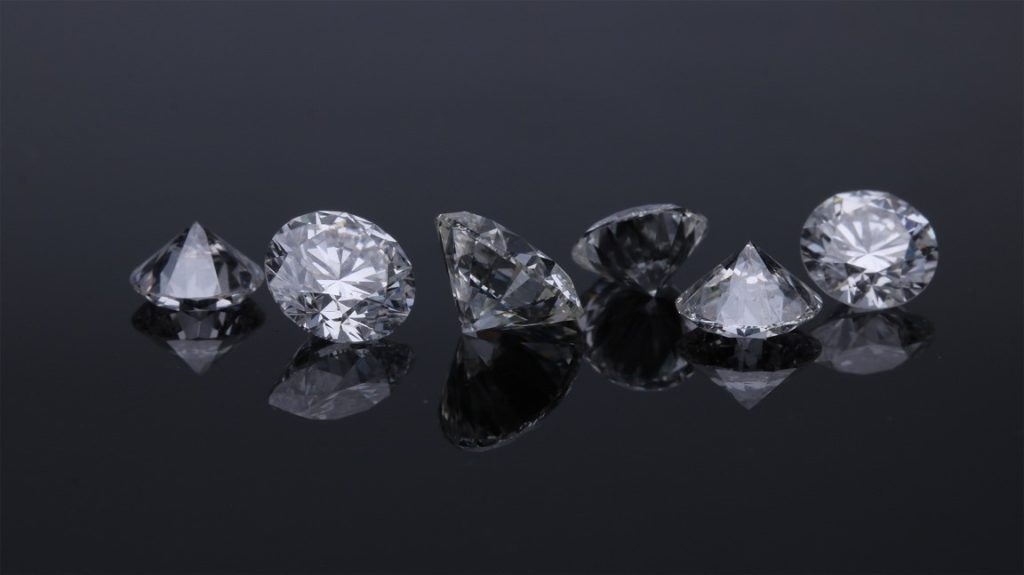
Diamonds have been a staple in the wedding industry for centuries. In past decades, the pressure to purchase a diamond ring for your partner was intense. However, due to their inherent beauty and successful marketing, diamonds are still a well-loved gemstone.
The quality of a diamond has four components (4C’s):
- Carat → describes the weight of a diamond, usually expressed with two decimal places. On average, diamond engagement rings have about one carat. This quality exerts the most influence on the price of any diamond.
- Color → refers to the hue of the diamond. Ideally, the diamond has no color at all; the absence of hues implies a high-quality diamond. Only an expert with the proper equipment can accurately determine a diamond’s color grade.
- Clarity → describes the amount or lack of blemishes and inclusions in the diamond. Diamond grades will place the stone under an apparatus to magnify areas and search for any imperfections. Remember, no diamond is pure.
- Cut → is typically thought of as the diamond’s shape. However, the cut is a measure of the diamond’s interactions with light. This quality determines the stone’s brightness, sparkle, and fire.
What Is a White Topaz?
White topaz is one of the topaz’s numerous varieties. Gemologists classify topaz as a silicate mineral composed of silicon-oxygen compounds. Silicates, in general, constitute around 95% of the materials in the Earth’s crust and upper mantle.
That is to say, topazes are not as rare and valuable as diamonds. In jewelry, white topaz undergoes radiation to treat it and increase its value. It is worth noting that a white topaz is frequently described as the affordable diamond alternative.
Gemologists and jewelers also refer to the diamond’s 4C’s to analyze a white topaz. For example, a white topaz with high clarity, absence of color, depth, and a well-made cut is a desirable alternative to a diamond.
White Topaz VS Diamond: What Are Their Differences?
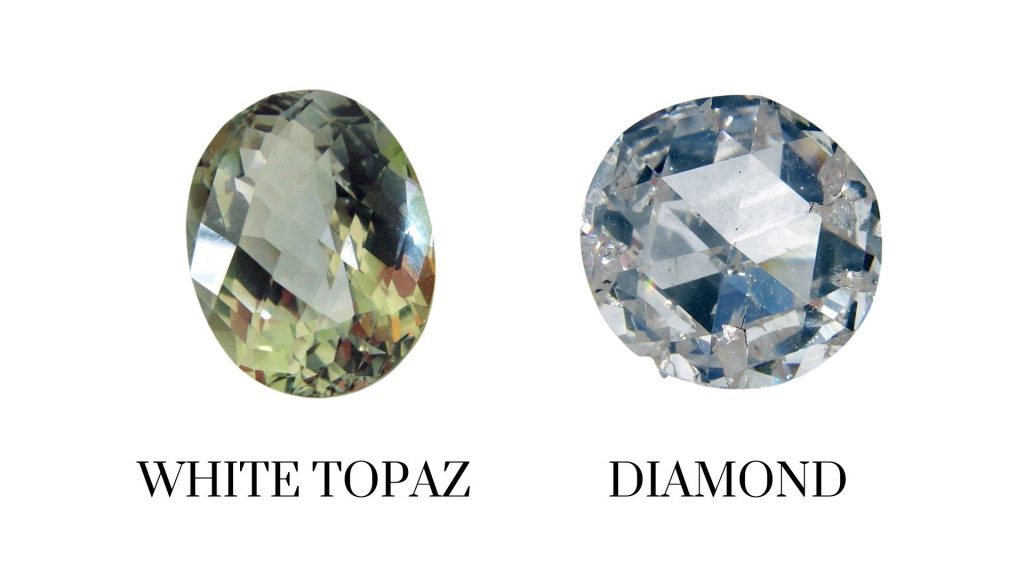
1. Hardness
When discussing gemstones, “hardness” refers to a specific mineral’s ability to resist scratching. The gemstone’s crystal structure and the bonds between atoms influence its hardness. Gemologists rank stones depending on what other minerals that particular stone can scratch.
The Mohs Scale of Hardness is the standard reference for gemstone hardness. It goes from one to 10, with the lowest being the most scratchable. Hardness will affect its durability and long-term wearability when deciding what center stone to use for jewelry.
Topaz is an eight on the scale. Therefore, it is safe to say that white topaz by itself is a hard gemstone.
Meanwhile, diamond is the only mineral to reach 10, the highest score. No mineral can damage a diamond other than another diamond.
While the difference in their rankings on the scale seems insignificant, it is worth noting that the Mohs scale is not linear: minerals rated nine — sapphires and rubies — are two times harder than topaz; diamonds are four times harder than sapphires and rubies.
2. Tenacity

Tenacity refers to a mineral’s cohesiveness — how likely or unlikely it is to break if it receives a blow. Tenacity and hardness together determine a gemstone’s durability.
Instead of a numeric scale, gemologists describe tenacity with “degrees” of toughness. There are five degrees: poor, fair, good, excellent, and exceptional.
Topaz has poor tenacity. Thus, white topaz will shatter easily under extreme stress, pressure, and impact.
Diamonds are only marginally better. Gemologists classify diamonds in jewelry anywhere from fair to good. Furthermore, jewelers may make particular enhancements or improvements to the mineral that might affect its toughness.
3. Visual Appeal
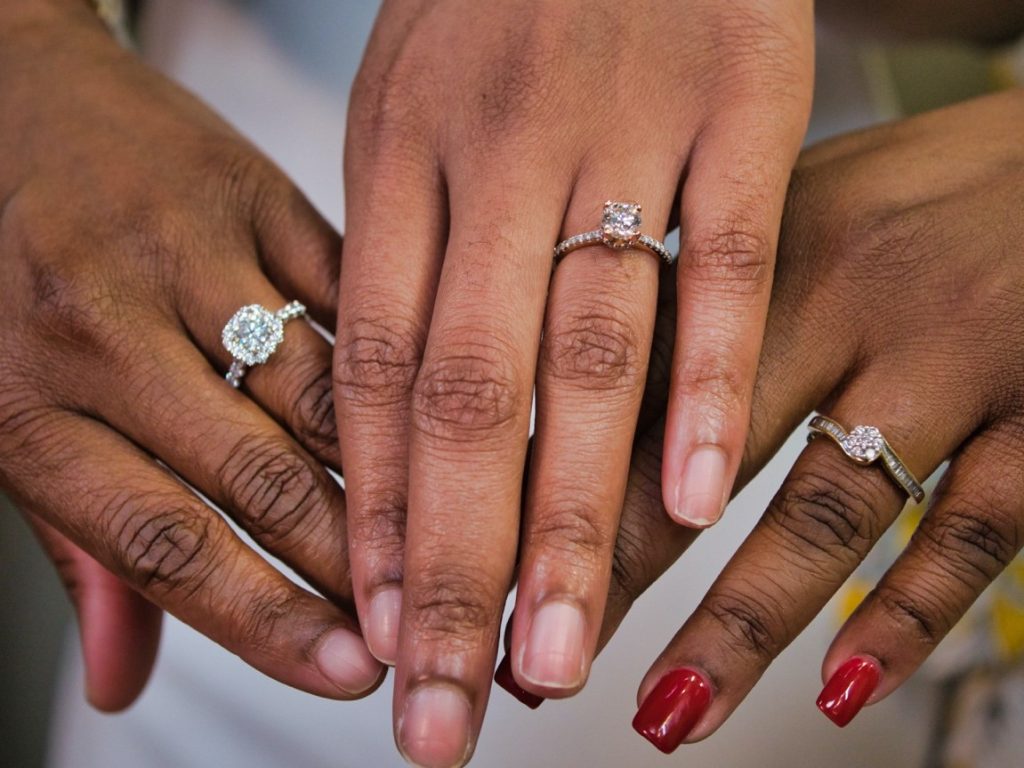
Both diamonds and white topazes look stunning, especially at first glance in a jewelry store. However, these minerals have different internal properties that affect how they interact with light.
For one, diamonds and topazes have dissimilar refractive indexes; a diamond has 2.42, while a topaz sits at 1.64. The higher the refraction, the more lustrous the stone. This visual effect results from the changes in direction and speed of the light that hits a gem.
Refraction numbers also influence how dirt and debris affect a mineral’s shine. Because white topaz has a lower refraction number, its sparkle diminishes more quickly than a diamond’s.
4. Long-Lastingness
It is safe to say that diamonds last longer than white topazes, considering the three abovementioned qualities.
Since diamonds are highly resistant to scratches, this sparkle will not diminish over time. The diamond you buy today will still sparkle in the next 15 years. You can also expect little to no damage on the stone itself; if you work with an expert jeweler, they can prevent chipping with proper techniques.
However, you cannot be sure about a white topaz’s brilliance in a few years. It is more brittle and less scratch-resistant than a diamond. Thus, it will chip and break easier.
5. Stability
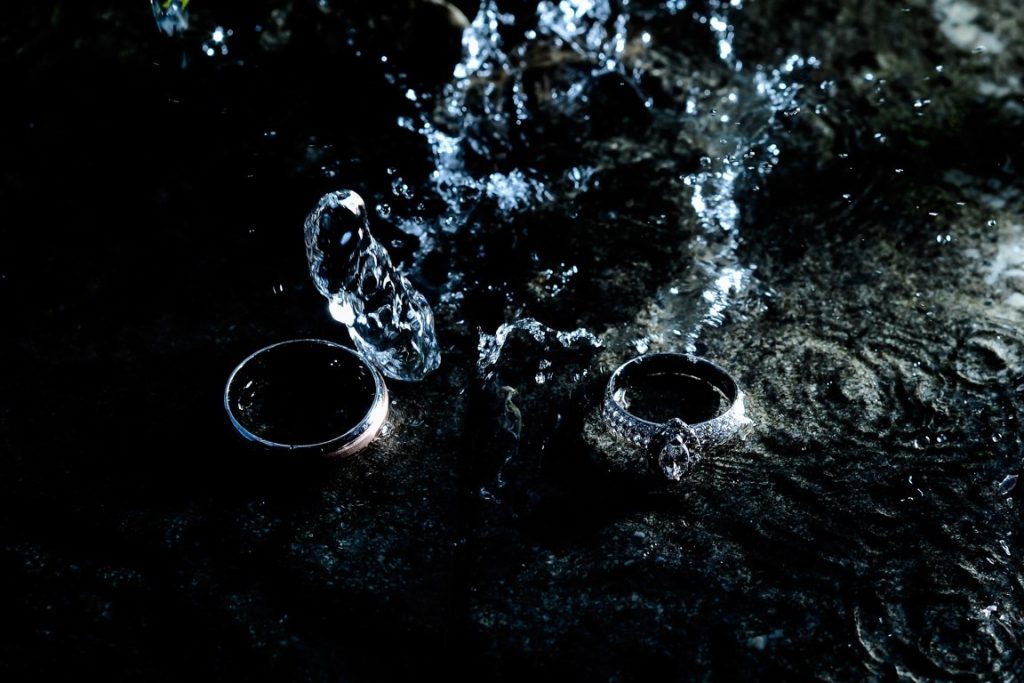
In gemology, stability measures how well a stone reacts to humidity, heat, light, chemicals, and environmental changes. Stability, along with hardness and tenacity, determines a gem’s durability and wearability.
Diamonds are typically very stable. However, they are prone to damage from sudden temperature fluctuations; for example, the diamond in your ring can develop new or bigger fractures during a house fire. However, acids and other chemicals do not affect diamonds.
However, topaz is considerably less stable. Like diamonds, they can suffer damage from thermal shock. Sudden and intense contact will also cause it to break; you may want to wear a topaz ring on your non-dominant hand.
Topaz is highly sensitive to acids and chemicals. Always remember to take a topaz ring off before you put makeup on, style your hair, apply lotion, and shower. Even specialized jewelry cleaners will damage the stone. Exposure to light can also make its sparkle dull.
6. Maintenance
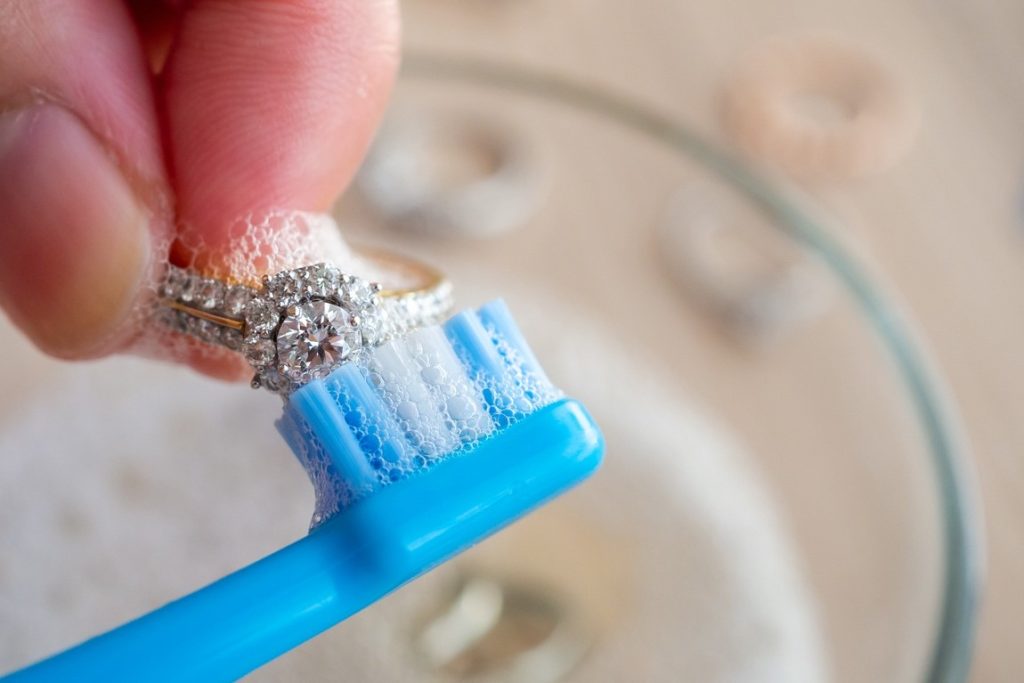
Maintenance refers to what you need to do to keep the gemstone as clean and brilliant as possible. Because diamonds are tougher and harder, they generally require less professional cleaning. Many even say that you do not need a professional; you can gently clean a diamond ring yourself.
Oppositely, white topazes require professional cleaning now and then. After every cleaning, the stone will regain some of its brilliance. Eventually, however, the wear and tear will become visible and challenging to remove.
However, it is best if you occasionally bring your ring — either diamond or white topaz — to a professional jeweler. They can inspect the stone, recommend procedures for maintenance, and answer any questions you may have.
7. Importance of Size
As mentioned above, a diamond’s carat significantly affects its selling price. The larger the diamond, the more expensive it is. Bigger diamonds are both difficult to find and challenging to cut into the desired shape.
A white topaz’s size also influences its price but oppositely — the larger the topaz, the lower the price. Blemishes and imperfections are easier to spot in bigger topazes, so smaller ones are preferable for rings.
8. Affordability

In a discussion regarding price points, diamond is the most expensive gemstone. In 2020, diamond engagement rings cost $5,500 on average. Many couples spend anywhere from $1,000 to $3,000, but the wealthier ones can spend over $50,000 on these rings.
We can use each mineral’s price per carat for a more accurate comparison. $1,400 is the least you can spend on a one-carat diamond ring. However, you can get a one-carat white topaz ring for as low as $100.
You also have to consider the cost of going to a jeweler to get your ring professionally cleaned. If the service is not included in your purchase, a store may charge you anywhere from $5 to $50. Small expenses will eventually add up to high numbers.
9. Origins
According to the Minerals Education Coalition, natural diamond has been documented in 35 countries. However, the biggest producers of diamonds are Russia, Botswana, the Democratic Republic of Congo, Australia, and Canada.
There are two geological sources for diamonds: kimberlites or pipe-shaped byproducts of tectonic and volcanic activity; placer deposits or stream sands from weathered kimberlite.
Meanwhile, Brazil, the United States (specifically Colorado), Sri Lanka, Australia, Pakistan, and Russia are the primary sources of white topaz.
Geologically, topaz forms during the late stages of magma cooling. They often develop in fractures and cavities of various igneous rocks, such as granite and pegmatite. Placer deposits from granites also contain topaz.
Similarities Between White Topaz and Diamond
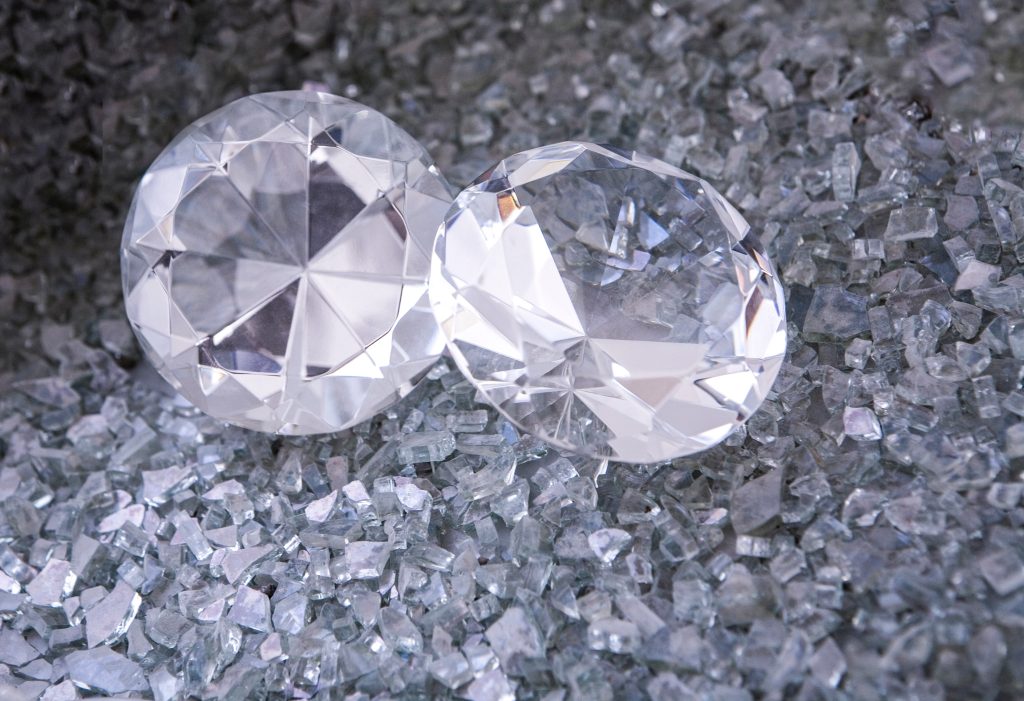
Both are Natural Gemstones
Some people might not like a gemstone if it is artificially made inside a laboratory. Examples include synthetic gems like ruby, sapphire, emerald, and cubic zirconia.
However, diamond and topaz are both natural gemstones. The diamonds we use now took 1 to 3.3 billion years to form. Meanwhile, topazes require several hundred to dozens of thousands of years to develop.
Flexibility in Styling
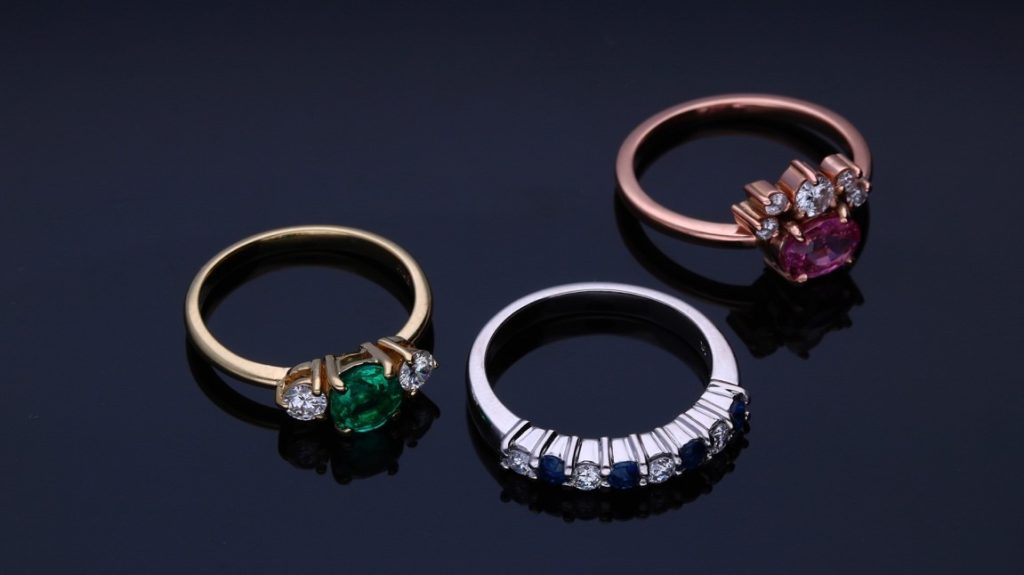
Diamonds and white topazes are transparent, so much so that sometimes, they emit a bright white hue. Just like a white dress or white pair of shoes, these white-looking gemstones are suitable for a wide range of styles.
Both gemstones come in a wide variety of cuts. You can opt for brilliant, pear, round, cushion, triangle, oval, and more.
As for the band, you can go with rose gold, platinum, cobalt chrome, silver, and more. You can choose a pavé wrap, hidden halo, or any style you want. A diamond or a white topaz will fit with any configuration perfectly.
Rich in Meanings and Healing Properties
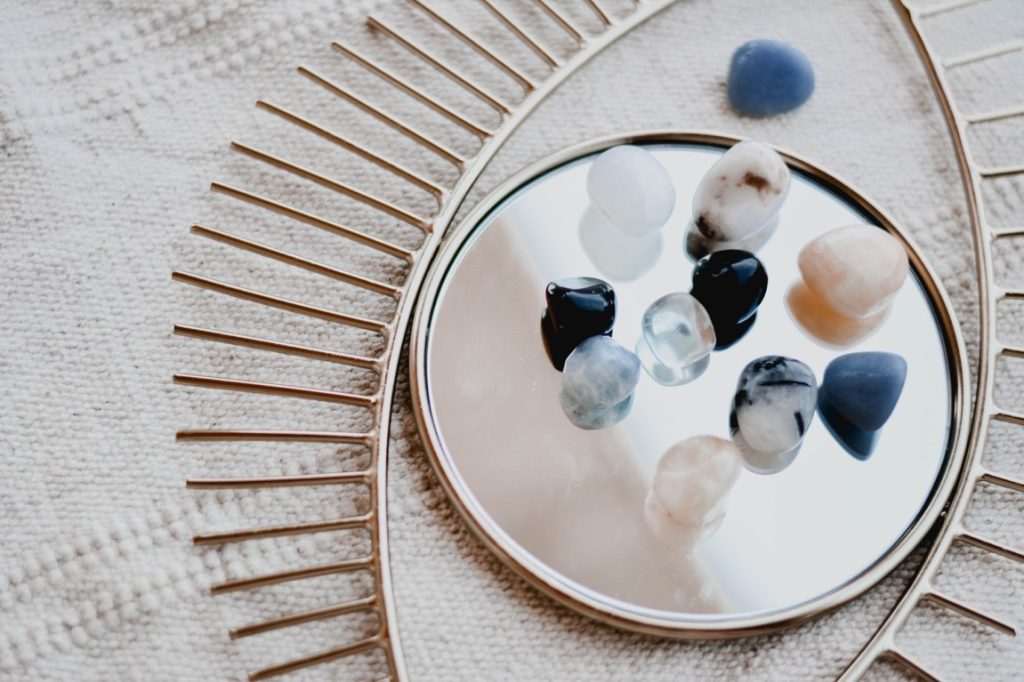
Many people believe in crystal healing as a method of self-care; they might find balance, peace, and positivity with the help of gemstones. White topazes and diamonds are rich in symbolism and properties that may help you.
White topaz, whether it is on a ring or not, can give you joy, stress relief, and energy. The gemstone improves your cognitive skills, ability to remember, and mood. You can use it as a supplement to overcome trauma and depression.
White topaz is also immensely helpful for engaged couples and newlyweds. It encourages you to be open-minded, allowing you to better plan for and adapt to different situations. The gemstone will also help you tap into your individuality, spirituality, and creativity.
As stated above, diamonds are closely associated with marriages. Thus, they represent a commitment, loyalty, and purity. Beyond this symbolism, diamonds have similar healing properties to white topaz.
For one, diamonds can instill clarity into your life. It stimulates your crown chakra, heightening the mind-and-body connection. These effects allow you to be courageous, resourceful, and strong. Furthermore, diamonds also manifest good fortune and abundance.
White Topaz VS Diamond: Other Things to Remember
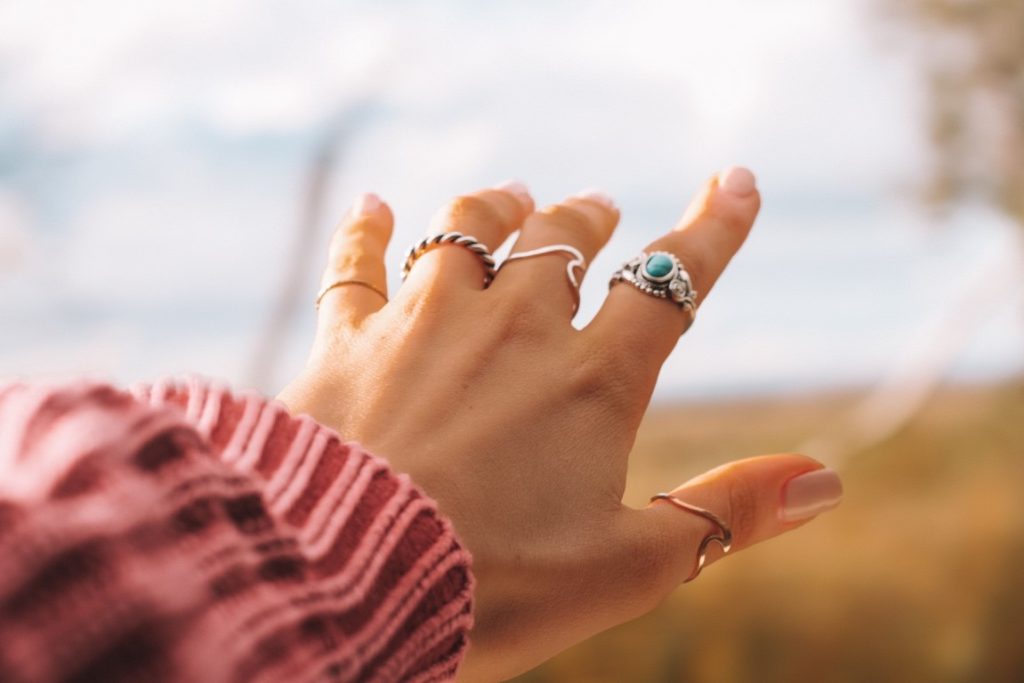
Why Not Both?
If you cannot decide the winner between white topaz VS diamond, ask your jeweler if there is a way to use both. For example, you can use a diamond as the center stone, while white topaz can be the accents surrounding it.
You Can Change Your Ring
Figuring out the answer to white topaz VS diamond can be challenging. You might feel indecisive and unable to choose one. However, if you are scared that you will eventually dislike your ring, do not worry — it is okay to change it.
Besides aesthetic reasons, some personal matters will necessitate a new ring. Maybe your ring is too tight in the morning, or your weight has changed, and the band is now uncomfortable. Regardless, if you can afford a new one, talk to your partner about possibly visiting a jeweler.
Give a Pre-Engagement Ring First
Pre-engagement rings are a type of ring for couples who want to get engaged but do not have the budget for the engagement ring of their dreams. Since they do not want to wait any longer, they purchase a placeholder or substitute ring in the meantime.
If you want a diamond engagement ring, but funds are tight, consider buying a white topaz pre-engagement ring. Once you have the budget, you can buy what you really want.
Think About the Future
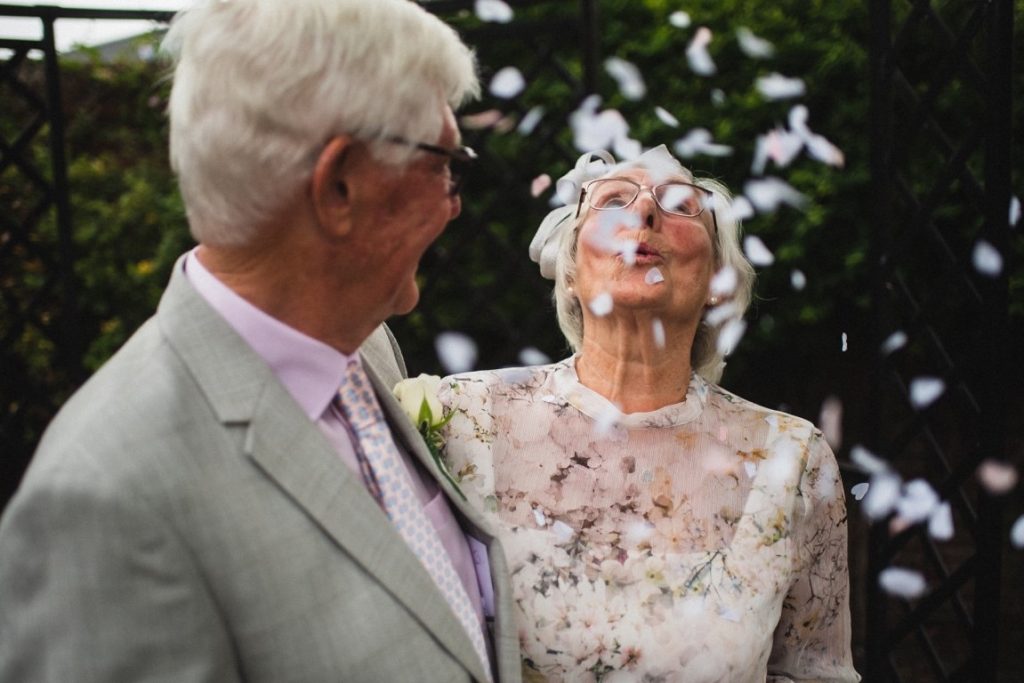
When you are purchasing a ring, it is safe to say you are already thinking about the future. You want to take your relationship to the next level. For some, this means starting a family, creating a business, or traveling the world.
Regardless of what future you envision, prioritize your ring’s wearability and durability. Do you want a ring that will still sparkle on your 15th anniversary as brightly as it did when you first bought it?
Do you want a ring you and your partner can wear to adventures and occasions without worrying too much about damage?
Do you want a ring, not necessarily thinking much about its appearance? Do you want a ring just as a physical manifestation of your commitment?
Examine your priorities. The differences listed above will help you make your decision.
Consider Other Diamond Alternatives
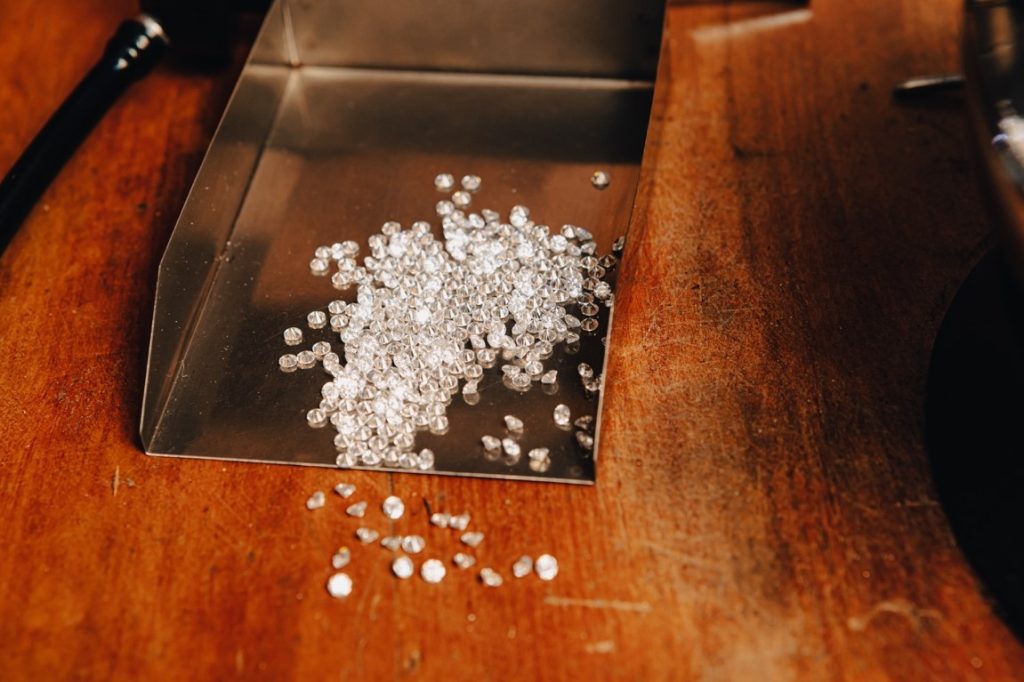
Do not stress yourself out about needing a diamond engagement ring. While it is gorgeous, it is not the be-all-end-all. If white topaz does not seem like the perfect fit, you can explore other alternatives to diamonds.
Morganite is a gemstone growing in popularity. It has a distinct pink sheen, though it is available in pastel and orange-ish shades. Morganite is a 7.5 to 8 on the Mohs Scale, similar to white topaz. It also has a refractive index of 1.59. It retails at around $300 per carat.
Moissanite is another well-loved diamond simulant. It has a rating of 9.25 on the Mohs Scale, setting it apart from the previous alternatives. Not only is it highly durable, but it also has a distinct fire and brilliance. One carat of moissanite begins at around $250.
It is worth mentioning that moissanite has greater brilliance than a diamond. Moreover, moissanite does not require many cleanings as it can repel fingerprints and other debris.
Cubic zirconia is a laboratory-made diamond simulant with a cubic crystalline form. It has more fire than a diamond. Likewise, it is absolutely clear — it does not have inclusions. Cubic zirconia has a score of 8.5 on the Mohs Scale. However, it is more prone to abrasions.
You can buy a carat of cubic zirconia for as low as $20. However, it is not the best choice for longevity; it soaks up oil from your skin, and even dust from your items can scratch its surface. You may only have two years before you need to purchase a new one.
With that said, cubic zirconia is an excellent choice if you are looking for a temporary pre-engagement ring.
There are many other synthetic diamonds and diamond simulants in the market. If none of the options above sound appealing, consider looking into white sapphire, yttrium aluminum garnet (YAG), gadolinium gallium garnet (GGG), spinel, quartz, and zircon.
Final Thoughts
Here is a summary of the key differences you need to know when deciding between a white topaz versus a diamond.
| White Topaz | Characteristic | Diamond |
| 8 out of 10 on the Mohs Scale | Hardness | 10 out of 10 on the Mohs Scale |
| Poor | Tenacity | Fair to good |
| 1.64 refractive index | Visual Appeal | 2.42 refractive index |
| Will last a few years | Long-Lastingness | Keeps brilliance for a lifetime |
| Less stable | Stability | Typically very stable |
| Needs regular professional cleaning | Maintenance | Requires little professional cleaning; you can DIY |
| The smaller the topaz, the more expensive | Importance of Size | The larger the diamond, the more expensive |
| ~$100 per carat + $5 to $50 per professional cleaning | Affordability | ~$1,400 per carat
Most couples spend $1,000 to $3,000, but the national average is $5,500 per ring |
| Russia, Botswana, the Democratic Republic of Congo, Australia, and Canada (biggest producers)
Sourced from kimberlites and placer deposits |
Origins | Brazil, the United States (especially Colorado), Sri Lanka, Australia, Pakistan, and Russia (primary sources)
Sourced from other igneous rocks (e.g., granite and pegmatite) and placer deposits |
At the end of the day, remember that you do not need to purchase an expensive ring. If your budget does not permit it, do not go into debt just to buy a white topaz or diamond ring. As long as you and your partner love each other — and are ready to commit — then you are set, ringless or not.